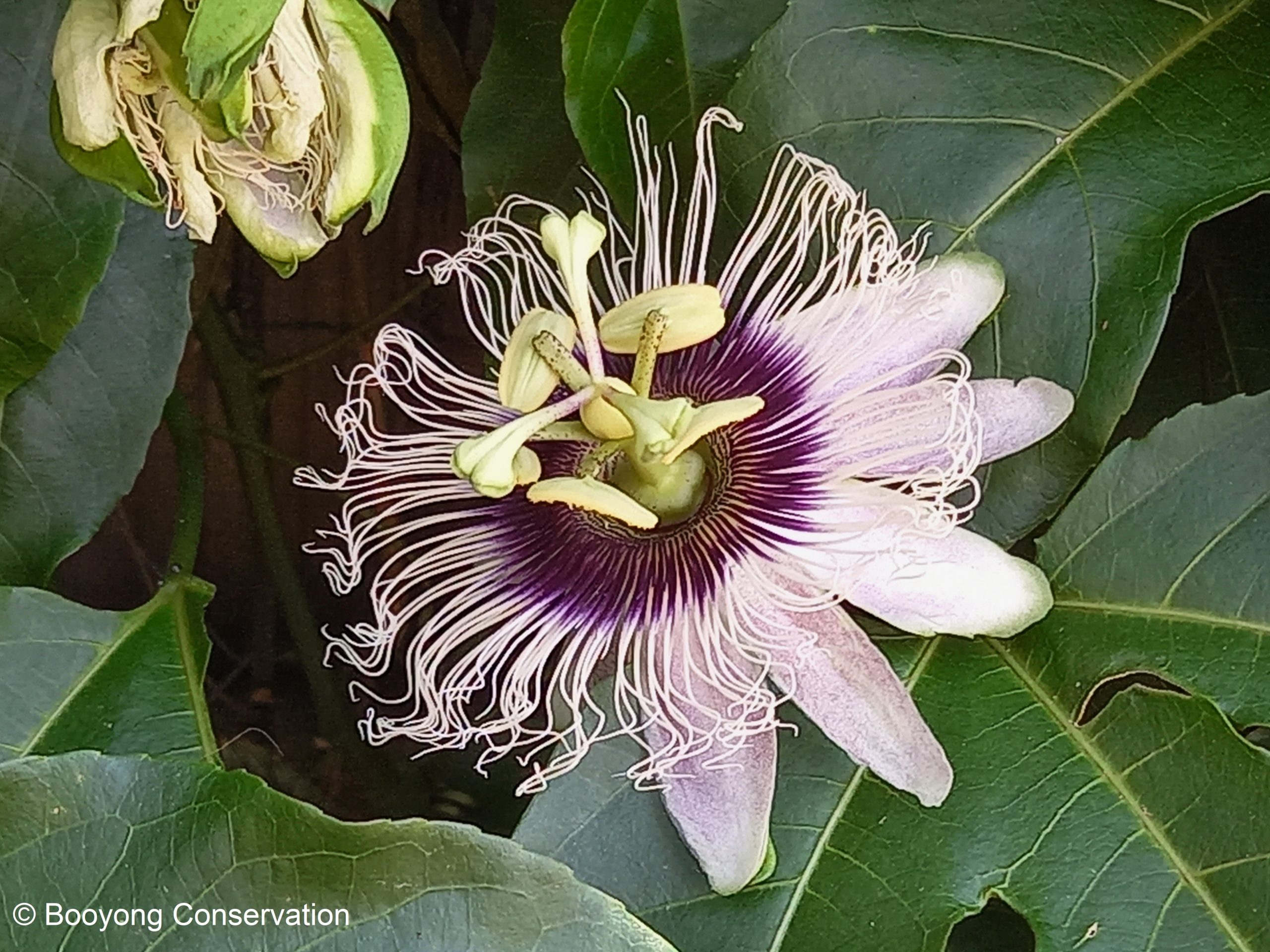So excited to see our Passionfruit vine near the shack producing fruit this Summer, it’s lovely and sweet and the flowers are especially beautiful.
Growing – Passionfruit are evergreen and fast growing and there are a great deal of varieties available. They grow on a vine, likes a position in full sun and require a strong trellis structure to support them. Passionfruit have fine tendrils that are perfect to attach to wire, and climb readily – we are constantly redirecting our vine back into the wire frame. They like to grow in well-drained, rich organic soil with a preferred pH of 5.5 to 6.5. Passionfruit can be grown in pots, but they must be strong, have a supportive structure, rich organic matter and regular feeding and watering is essential.
They grow on a vine, likes a position in full sun and require a strong trellis structure to support them. Passionfruit have fine tendrils that are perfect to attach to wire, and climb readily – we are constantly redirecting our vine back into the wire frame. They like to grow in well-drained, rich organic soil with a preferred pH of 5.5 to 6.5. Passionfruit can be grown in pots, but they must be strong, have a supportive structure, rich organic matter and regular feeding and watering is essential.
We find one plant is adequate for our family, but if you’d like to grow another space them about 2.5m apart and be sure to build a strong supportive trellis.
 Care – Passionfruits have an extensive root system, so ensure your passionfruit does not need to compete with trees and other roots for nutrients and protect from frost when young. Your passionfruit will have a woody centre and outer growth is generally lovely and green. Mulch to retain water and protect from the hot sun, and as usual keep it away from the stem so it doesn’t rot.
Care – Passionfruits have an extensive root system, so ensure your passionfruit does not need to compete with trees and other roots for nutrients and protect from frost when young. Your passionfruit will have a woody centre and outer growth is generally lovely and green. Mulch to retain water and protect from the hot sun, and as usual keep it away from the stem so it doesn’t rot.
Water regularly, two to three times a week when watering and flowering and ensuring all of the roots are hydrated. Fertilise your passionfruit with chicken manure twice a year in Spring and Autumn, a little blood and bone doesn’t hurt either. Be mindful not to overfeed with a nitrogen rich fertiliser as this will encourage leaf growth and not fruit production. Poor Pollination also affects fruit production.
Pruning – Prune back approximately 30 cms (about a third) in late Winter or early Spring.
Companion Planting – We have planted dwarf marigolds in the passionfruit bed to encourage beneficial insects, but don’t overcrowd the bed as they don’t like competition.
Pests and Diseases – Scale is a common pest that will suck the sap out of the plant and can be treated with an organic spray.
Harvest – Flowers appear in mid Spring and fruit can be expected early Summer, approximately 18 months after planting. Allow the passionfruit to ripen on the vine, they will drop off when ready but we found it’s helpful to get them just before hand before the possums. We did notice something had tried to chew through the thick skin.
months after planting. Allow the passionfruit to ripen on the vine, they will drop off when ready but we found it’s helpful to get them just before hand before the possums. We did notice something had tried to chew through the thick skin.
Propagation – Spring is the best time to plant a passionfruit and a vine can be propagated from cuttings but are best grown from seed.
Health Benefits – Passion fruit is a good source of nutrients, especially fiber, vitamin C, and provitamin A.
Eating – Our Passionfruits are lovely and plump and this year we made a Passionfruits Syrup and Cordial. They were also perfect just cut in half and eaten with a spoon.
 Passionfruits Sugar Syrup – we used a basic sugar syrup recipe that we often use for herbs (Basil Mint) in our garden and Jack loved it on his icecream and yoghurt.
Passionfruits Sugar Syrup – we used a basic sugar syrup recipe that we often use for herbs (Basil Mint) in our garden and Jack loved it on his icecream and yoghurt.
Dissolve 300g sugar in 150ml water over a low heat until the liquid takes on a textured look, (don’t overcook it till it turns to toffee).
Add a cup or so of fresh passionfruit, pop the lid on and let it cool.
Strain and store in a glass sealed bottle or jar in the fridge, you can leave the pulp in for a more textured look.
Passionfruit Cordial – for a lighter cordial we used 1 cup water to 1 cup of sugar, this was less syrupy and also delicious. It can also be added to gin, with a slice of lemon for a Summer cocktail.

You must be logged in to post a comment.